Re-installation of glacier discharge station CPE-KG-62ºS
We left Spain on December 31, 2010. Our first plane from Madrid to Santiago de Chile had its lift-off at 23:55h. Yes, shortly before the New Year started! The most economic option to fly to South America!
Our first destination on King George Island, the biggest Island of the South Shetland Archipelago in the Antarctic, was the Russian Base Bellingshausen. For one week my colleague Adolfo Eraso and I worked from Bellingshausen Station with very little rest. Every day we walked 5 km between the station and our monitoring station CPE-KG-62ºS, which measures the glacial discharge of a melting glacier on King-George Island continuously since the year 2002.
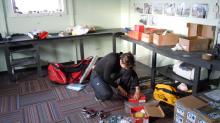 |
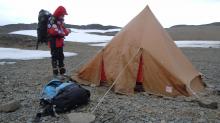 |
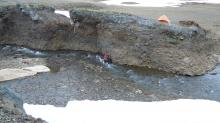 |
Within the Spanish GLACKMA Project we work with 8 different monitoring stations for continuous quantification of glacier discharge all over the world. The measuring stations are positioned in front of various glaciers at different latitudes. In the Northern hemisphere we work in the Arctic at Svalbard (Spitsbergen) and in the Southern hemisphere in the Antarctic and the Patagonian Andes. One of these eight glacier stations is this one CPE-KG-62ºS, measuring the glacier discharge that outflows into Maxwell Bay on King-George Island. Potter Cove, where our IMCOAST colleagues are working, is one little inlet of the larger Maxwell Bay. Within IMCOAST we study how rapidly melting glaciers affect the coastal ecosystems in the Antarctic and for this the understanding of the glacier melt dynamics (the changes in the amount of glacier discharge over time) is centrally important. The CPE station is working currently and generating hourly time series – continuously since January 2002 – of glacier discharge.
Our first task on this part of the expedition was the replacement of the old sensors of this CPE with new and modern instruments, to continue generating time series of glacier discharge. The station works with a pressure sensor, which is installed in the glacier catchment area of the ice cap (where all the glacier discharge flows together forming a run-off stream). The pressure sensor measures the water flow volume that leaves the glacier and is complemented with a water temperature sensor. The combination of water mass flow and temperature allows us to exactly determine the beginning and the end of the annual discharge waves from the glacier, avoiding the problem of false flow measurements when the river is frozen. Using the sensors we will be able to establish very precisely the discharge characteristics of the glacier over time. But now the important thing is that the new sensors are recording data and are working properly. We will continue from here to Jubany for our work in Potter Cove.
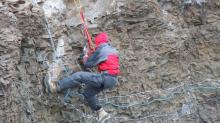 |
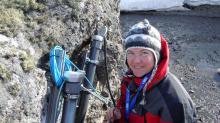 |
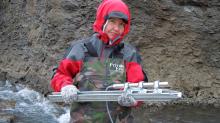 |
During this expedition we have also started a new line of outreach work, designed especially for school kids and teachers from Spanish speaking countries. You guys can look up information about our work at http://karmenka.glackma.es in Spanish. There we are posting articles, photos, videos and proposing activities and exercise that can be used in class work. So, if you are interested, please go ahead and take a look at this additional page.

